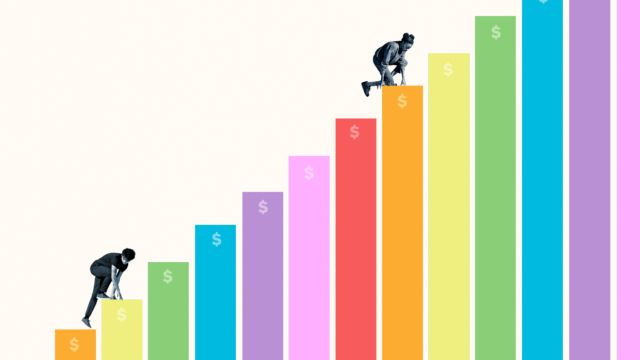June is Pride month, an opportune time to shine a light on the ongoing fight for pay equity within the LGBTQIA+ community. In New York, where diversity and inclusion are touted, LGBTQIA+ individuals continue to experience staggering rates of poverty, pay gaps, and discrimination in the workplace. PowHer™ New York (PowHerNY) explores the challenges they encounter and the initiatives aimed at bridging this divide.
Understanding the Wage Gap
A report from the Social Science Research Network shows that college-educated workers who self-identify as LGBTQIA+ earn 22% less than their heterosexual cisgender counterparts.
Additionally, analysis done by the HRC Foundation found that LGBTQIA+ individuals make 90% of the median weekly wage that a typical US worker makes. This wage gap is higher among LGBTQIA+ women workers with trans women making only 60 cents on the dollar, and is further exaggerated along racial and ethnic lines, specifically for Black, Native American, and Latinx LGBTQIA+ women workers.
Factors such as workplace discrimination, limited employment opportunities, and bias contribute to this wage gap. According to a 2022 report from the Center for American Progress (CAP) about 50% of LGBTQIA+ reported discrimination or harassment in the workplace due to their sexual orientation, gender identity, or intersex status. Reporting these incidents can result in job loss or limited mobility within the same company, further impacting earning potential, career advancement, and financial security.
Combatting the Pay Gap by Overcoming Discrimination
Creating inclusive work environments is important to combating the wage gap. Some New York-based organizations, such as Callen-Lorde Community Health Center, NYC Anti-Violence Project, and Ali Forney Center, have implemented initiatives such as ‘adversity and inclusion training’ to promote diversity, anti-discrimination, social awareness, and pay equity. By fostering inclusive, employer-led policies companies are setting an example for others to follow.
But not all employers find the financial or social incentive compelling enough to promote more inclusive workplaces and working conditions for LGBTQIA+ workers, which is why legislative efforts are key in equitizing the value of all workers.
New York’s Equal Pay Provision which took effect in October of 2019 prohibits employers from paying different wages for equal work or substantially similar work, regardless of factors like race, disability and sexual orientation, gender identity or expression. Differences in pay can only be based on a legitimate reason for a pay difference based on specific factors.
Although this is an important win for the LGBTQIA+ community, discrimination is not always easily identifiable or enforceable. For this reason, filing complaints in addition to or beyond HR channels, when individuals feel they have been discriminated against, holds the employer accountable and makes the New York Department of Labor (DOL) more acutely aware of these violations and thus more likely to address discrimination in specific workplaces. Data collected from reported complaints and employers reporting equal pay data as suggested by the 2023 Gender Wage Gap Report — will only strengthen the push for legislation that seeks further pay equity protections by establishing clearer guidelines for employers to ensure fair and inclusive workplaces.
Proud to Act
Achieving pay equity for LGBTQIA+ individuals in New York requires collective action and continued advocacy. By acknowledging the challenges they face and supporting legislative efforts – specifically reliable data reporting – we can work towards a more equitable future.
Let us celebrate Pride month and LGBTQIA+ Equal Pay Awareness Day on June 15 by committing to bridging the wage gap and ensuring that every individual, regardless of sexual orientation or gender identity, receives the compensation they deserve. Together, we can create a society that values diversity, inclusivity, and economic justice for all.
Click here to find out more about the state of LQBTQIA+ issues, listen to LGBTQIA+ voices, and learn what actions you can take.


